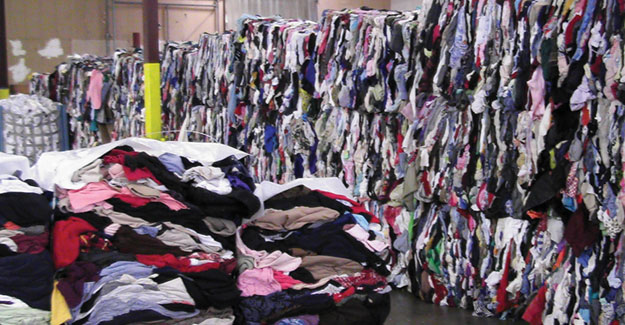
EU Parliament Highlights Environmental Impact Of Fashion Industry
The European Parliament has published a briefing on the Environmental impact of the textile and clothing industry. The briefing outlines the functioning of the textile and clothing industry in the EU, highlighting environmental issues stemming from the EU consumption of textiles and clothing and presenting possible ways forward. According to the briefing, the amount of clothes bought in the EU per person has increased by 40% in the past decades, driven by a fall in prices and the increased speed with which fashion is delivered to consumers. This rise in consumption carries with it a number of negative environmental impacts, fuelled primarily by the "enormous" quantities of water, energy and chemicals required in the production, processing, distribution and consumption of clothing and textiles. The effect of these impacts is further compounded by the amounts of waste generated throughout the supply chain, including fabric cut-offs, packaging, and end-of-life textiles, along with the ineffectiveness of most recycling and reuse schemes currently in place. With this in mind, the briefing identifies four main environmental issues along the supply chain for textiles and clothing. First, the production of raw materials (e.g., cotton and polyester) contributes significantly to the environmental footprint of the textile and garment industry. According to the 2017 Pulse of the Fashion Industry Report, natural fibres have the highest environmental impact, with silk having an especially detrimental effect regarding depletion of natural resources and global warming, cotton contributing excessively to water scarcity and wool to greenhouse gas emissions. Second, processing and garment production - spinning raw materials into yarns, weaving these into fabrics and applying finishing techniques - are energy-intensive processes in which large amounts of water and chemicals are used. Indeed, of the 1,600+ chemicals used in the production of clothing, at least 165 are classified as hazardous to health or the environment under EU regulation. Third, the briefing identifies consumer use as the phase with the largest environmental impact, considering the water, energy and chemicals used in washing and drying clothes. Finally, the briefing addresses the environmental impact of clothes and textiles' end-of-life stage, highlighting issues with recycling, meaning that, globally, less than 1% of all materials used in clothing are recycled back into clothing. Having set out the main issues facing the clothing and textile industry in the EU, the briefing goes on to make a series of recommendations for improving sustainability in each phase of the production process. For example at the consumption stage, the Parliament recommends measures to extend the longevity of clothes, boosting "slow fashion" and integrating collection schemes for reuse, repair and recycling into the sales process. At the design and production phase, the briefing puts forward the notion of "circular fashion", designing clothing and textiles in such a way as to minimise waste and keep materials within the production and consumption loop for as long as possible. At the waste phase, the Parliament recommends the introduction of extended producer responsibility schemes to make producers and importers legally responsible for ensuring used clothes are reused or recycled. Currently, France is the only member state with such schemes in place for clothes, with an extended producer responsibility law dating from 2006. These recommendations build on the existing circular economy package adopted in 2018, which takes an important step with respect to clothes and textiles, requiring for the first time that EU member states ensure textiles are collected separately in domestic waste management schemes. Further to this, the 2018 Waste Directive also requires the European Commission to consider, by the end of 2024, whether targets for textile waste reuse and recycling should be introduced in addition to existing waste collection targets. n
Textile Excellence
If you wish to Subscribe to Textile Excellence Print Edition, kindly fill in the below form and we shall get back to you with details.








